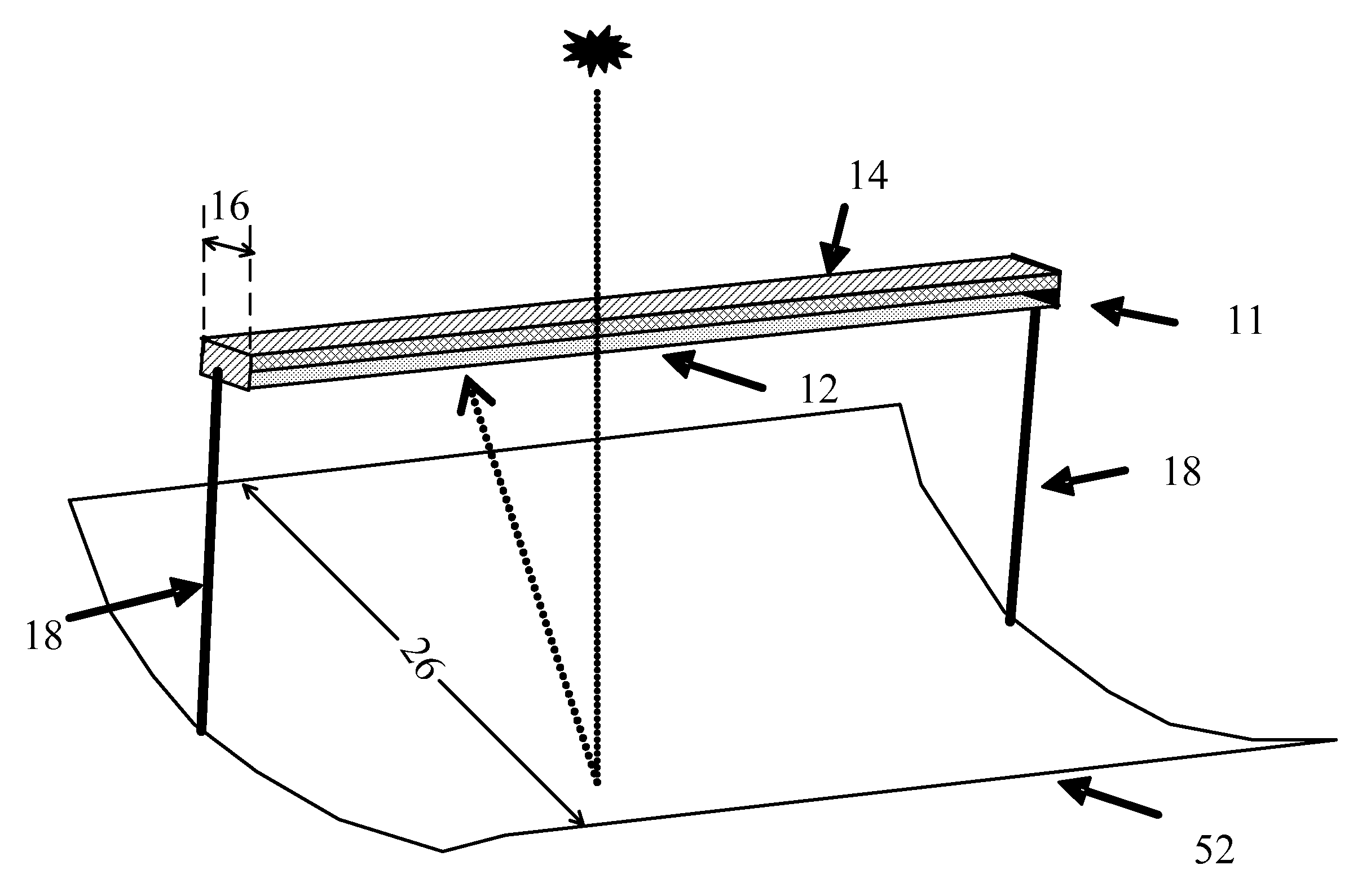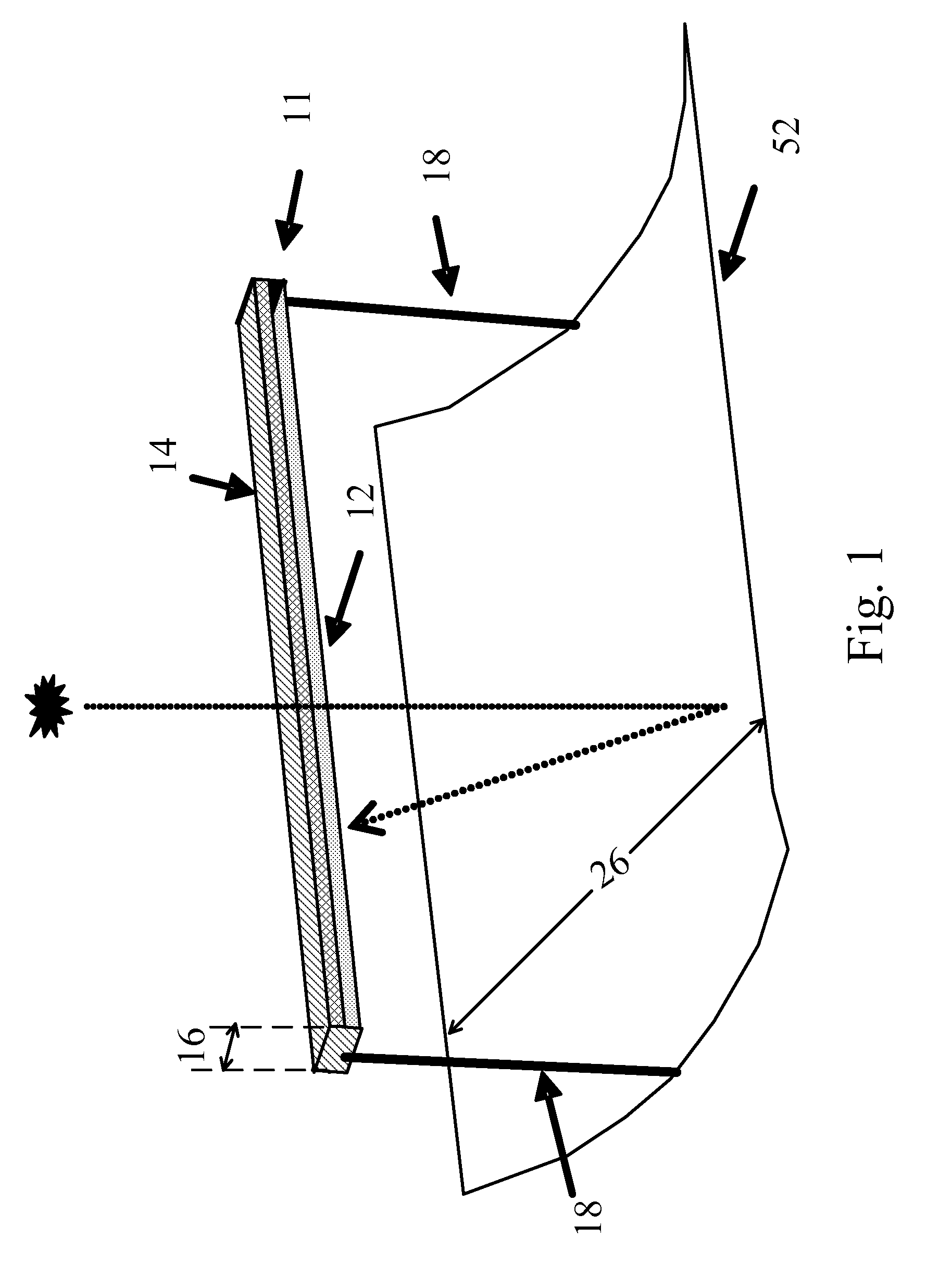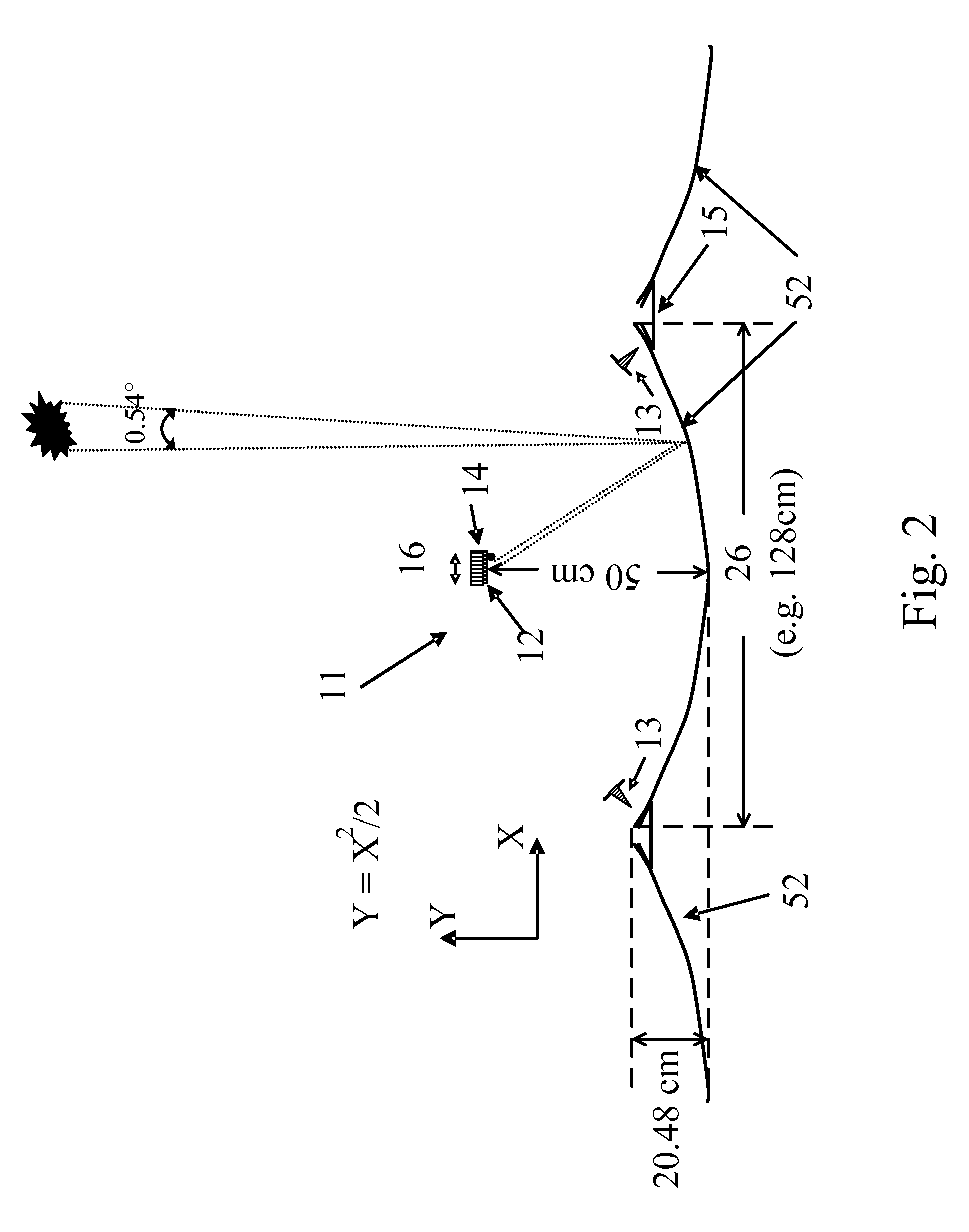Method and Apparatus to Lower Cost Per Watt with Concentrated Linear Solar Panel
a technology of concentrated solar panels and solar panels, which is applied in the safety of solar heat collectors, lighting and heating apparatus, and thermal-pv hybrid energy generation. it can solve the problems of high cost of silicon cells with high efficiency, unconscionable by the industry today, and large amount of silicon cells without sun concentration. achieve the effect of reducing the cost of 2-axes trackers, and reducing the cost of trackers
- Summary
- Abstract
- Description
- Claims
- Application Information
AI Technical Summary
Benefits of technology
Problems solved by technology
Method used
Image
Examples
Embodiment Construction
[0024]Spatially relative terms, such as “beneath”, “below”, “lower”, “above”, “upper” and the like, may be used herein for ease of description to describe one element or feature's relationship to another element(s) or feature(s) as illustrated in the figures. It will be understood that the spatially relative terms are intended to encompass different orientations of the device in use or operation in addition to the orientation depicted in the figures.
Quasi-Parabolic Trough Definition and Concentration Ratio
[0025]As shown in FIG. 1, the main aspect of the disclosure is to use a quasi-parabolic trough (QPT) reflector 10. The QPT reflector 10 uses one piece bended reflector sheet 52. Preferred QPT reflector uses rust proof sheet metal front mirror bended in natural shape. The bending force applied on both sides of the reflector sheet 52 would force the bending curve into natural quasi-parabolic shape. The reflector sheet 52 can also use fiberglass, plastic, acrylic, aluminum or aluminum...
PUM
 Login to View More
Login to View More Abstract
Description
Claims
Application Information
 Login to View More
Login to View More - R&D
- Intellectual Property
- Life Sciences
- Materials
- Tech Scout
- Unparalleled Data Quality
- Higher Quality Content
- 60% Fewer Hallucinations
Browse by: Latest US Patents, China's latest patents, Technical Efficacy Thesaurus, Application Domain, Technology Topic, Popular Technical Reports.
© 2025 PatSnap. All rights reserved.Legal|Privacy policy|Modern Slavery Act Transparency Statement|Sitemap|About US| Contact US: help@patsnap.com



